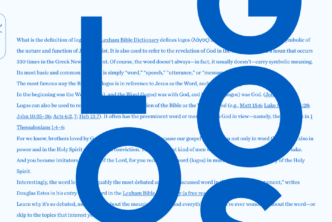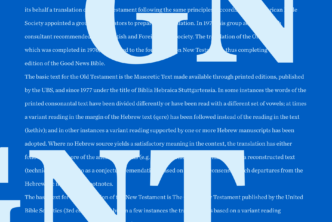You could tell I was one of them. The hole-punched cards hanging from a steel ring on my belt loop gave me away.
I was an ancient language student.
The cards were my flashcards, and I didn’t go anywhere without them: to class, to the student dining room, to the dorm, to the movies, even to weddings. I would flip through them whenever I had a spare moment.
I had to, because learning a new language requires discipline and perseverance. Even after you’ve conquered the grammatical and syntactical intricacies of the language, you still need to add more (and more) words to your vocabulary storehouse—and somehow maintain what you’ve already learned.
While flashcards were helpful, I found they weren’t enough. I needed a better way to learn new words and reinforce the words I already knew.
So I started reading my Greek New Testament and Hebrew Old Testament.
Reader’s editions to the rescue
When I first started seriously reading in the original languages, my lack of vocabulary was still holding me back. I would read two words, be forced to look up a word in my lexicon, read three words, then have to look up another. The process was deflating, and I know many students of Greek and Hebrew who have given up hope of ever learning the biblical languages for this very reason.
Reader’s editions were my answer. A reader’s edition of the Greek New Testament or Hebrew Old Testament has multiple footnotes on each page displaying the glosses for unfamiliar words. A reader’s edition reduces the friction caused by a student’s insufficient knowledge of vocabulary. No more flipping through a lexicon to find the word you don’t know. Instead, simply drop your eyes to the bottom of the page, grab the contextual gloss, and continue reading the text.
It’s like a parent (or older sibling) who feeds words into the struggling sentences of a toddler who is just learning to talk.
The problem with printed reader’s editions
But by the time that child is five, the constant interjections are no longer a help; they are interruptions. In the case of the younger language learner, they may even stunt growth. Ideally, there would be multiple levels of reader’s editions, each tailored for the vocabulary knowledge of different readers—so that the helps didn’t actually become hindrances.
Enter Logos Bible Software’s new Reader’s Edition feature, available in Logos Now. With the Reader’s Edition, I can transform any of my interlinear texts in Logos—the Hebrew Old Testament, Greek New Testament, Septuagint, and Apostolic Fathers—into an original language reader.
But here’s the best part: Logos has created a dynamic reader’s edition which I can modify to meet my needs, to match my level. I can create word lists that contain all the words I know so that only those are hidden. Or I can hide words based on their frequency of use in the corpus of literature I’m studying. And I can continually adjust the parameters as I learn more words.
Take a look at this video to see how.
This feature is available with a subscription to Logos Now. Get your first month free!





